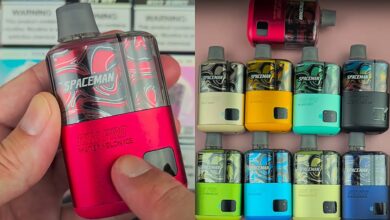Understanding Core Vape: An Introduction to Vaping Technology

Vaping has become a popular alternative to smoking, with various devices and technologies enhancing the experience for users. Core vape, a term often used in the vaping industry, refers to the central components and mechanisms of a vape device that are crucial for its operation. This article delves into the core technology of vaping, its components, benefits, and safety considerations.
What is a Vape?
A vape, or vaporizer, is a device designed to heat a liquid, turning it into vapor for inhalation. Unlike traditional cigarettes, vapes do not burn tobacco, making them a popular choice among those looking for a potentially less harmful alternative to smoking. Vapes come in many forms, including e-cigarettes, mods, and pod systems, each catering to different preferences and experience levels.
Key Components of a Vape
Battery
The battery is the heart of any vape device, providing the power needed to heat the e-liquid. Batteries can vary widely in capacity and type, ranging from small and integrated batteries in pod vapes to larger, replaceable ones in more advanced mods.
Atomizer
The atomizer is where the actual vaporization process takes place. It typically contains a heating coil that, when powered by the battery, heats the e-liquid to the point of vaporization. The atomizer is a critical part of any vape setup, influencing everything from vapor production to flavor intensity.
E-Liquid
E-liquid, or vape juice, is the material that is vaporized in the device. It usually consists of propylene glycol (PG), vegetable glycerin (VG), flavorings, and often nicotine. The ratio of PG to VG can affect the throat hit and vapor production, while different flavors cater to user preferences.
Tank or Pod
The tank or pod holds the e-liquid and houses the atomizer. Tanks are typically used in larger vape devices and can hold more e-liquid, whereas pods are often found in more compact and simpler devices, ideal for beginners or for those seeking convenience.
Benefits of Vaping
Harm Reduction
Many switch to vaping as it is generally considered less harmful than smoking traditional cigarettes. Vaping does not involve combustion, which significantly reduces the inhalation of tar and other harmful combustion byproducts.
Variety and Customization
Vaping offers a vast array of flavors and device styles, meeting the needs and tastes of almost any user. Additionally, devices come with various settings that can adjust the temperature, voltage, and airflow, allowing for a customized vaping experience.
Smoking Cessation
Vaping is often used as a tool for quitting smoking. With adjustable nicotine levels, users can gradually reduce their nicotine intake, potentially easing the quitting process.
Safety Considerations and Best Practices
Device Maintenance
Regular maintenance of the vape device is crucial for safe operation. This includes regular cleaning of the tank, proper charging of the battery, and replacement of coils to prevent overheating and ensure optimal performance.
Proper Usage
Following the manufacturer’s guidelines for device usage and not modifying equipment unnecessarily can help mitigate risks associated with improper handling or configurations.
Awareness of Regulations
Staying informed about local laws and regulations regarding vaping is important, as these can vary significantly by region and influence where and how you can vape.
Conclusion
Core vape technology offers a sophisticated and customizable approach to smoking cessation and recreational use. While it presents numerous benefits, it is essential for users to operate their devices responsibly and remain informed about vaping’s potential health impacts and regulatory status. By understanding the fundamental components and proper usage of vape devices, users can significantly enhance their vaping experience, ensuring it is as safe and enjoyable as possible.




